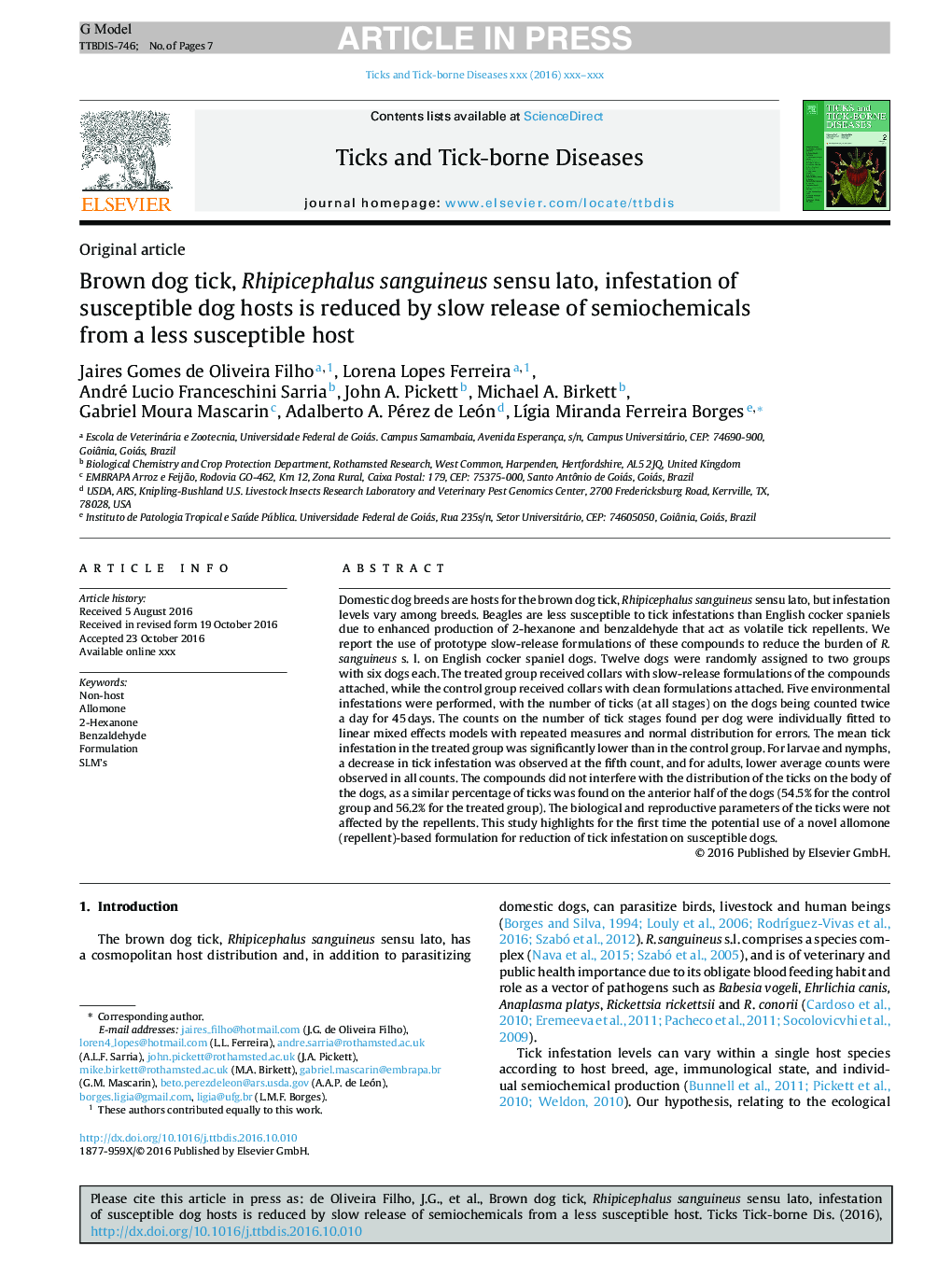| Article ID | Journal | Published Year | Pages | File Type |
|---|---|---|---|---|
| 5546457 | Ticks and Tick-borne Diseases | 2017 | 7 Pages |
Abstract
Domestic dog breeds are hosts for the brown dog tick, Rhipicephalus sanguineus sensu lato, but infestation levels vary among breeds. Beagles are less susceptible to tick infestations than English cocker spaniels due to enhanced production of 2-hexanone and benzaldehyde that act as volatile tick repellents. We report the use of prototype slow-release formulations of these compounds to reduce the burden of R. sanguineus s. l. on English cocker spaniel dogs. Twelve dogs were randomly assigned to two groups with six dogs each. The treated group received collars with slow-release formulations of the compounds attached, while the control group received collars with clean formulations attached. Five environmental infestations were performed, with the number of ticks (at all stages) on the dogs being counted twice a day for 45Â days. The counts on the number of tick stages found per dog were individually fitted to linear mixed effects models with repeated measures and normal distribution for errors. The mean tick infestation in the treated group was significantly lower than in the control group. For larvae and nymphs, a decrease in tick infestation was observed at the fifth count, and for adults, lower average counts were observed in all counts. The compounds did not interfere with the distribution of the ticks on the body of the dogs, as a similar percentage of ticks was found on the anterior half of the dogs (54.5% for the control group and 56.2% for the treated group). The biological and reproductive parameters of the ticks were not affected by the repellents. This study highlights for the first time the potential use of a novel allomone (repellent)-based formulation for reduction of tick infestation on susceptible dogs.
Keywords
Related Topics
Life Sciences
Agricultural and Biological Sciences
Animal Science and Zoology
Authors
Jaires Gomes de Oliveira Filho, Lorena Lopes Ferreira, André Lucio Franceschini Sarria, John A. Pickett, Michael A. Birkett, Gabriel Moura Mascarin, Adalberto A. Pérez de León, LÃgia Miranda Ferreira Borges,
